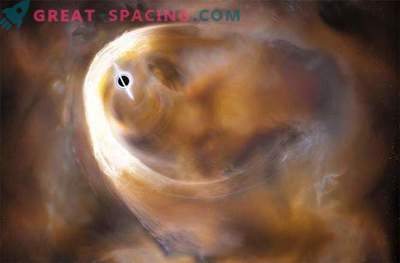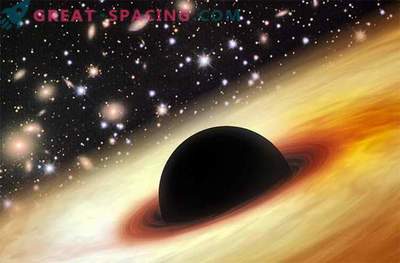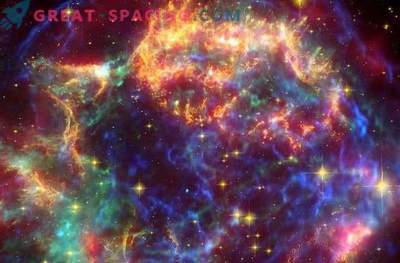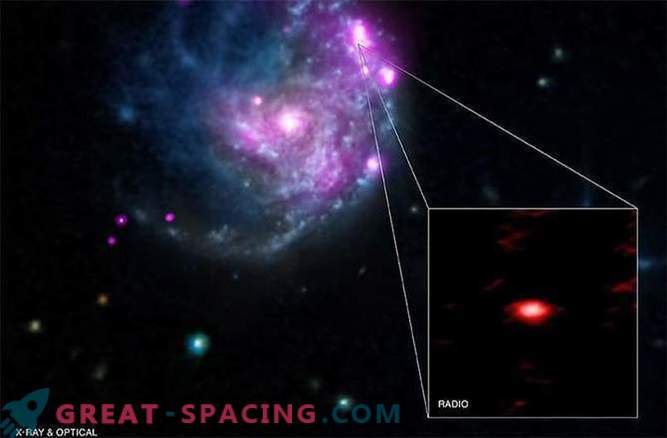
Astronomers discovered a black hole located in the spiral arm of a galaxy at a distance of 100,000,000 light years from Earth. But this is not an ordinary black hole; it belongs to the elusive class, which may be the “missing link” in the evolution of black holes.
Using observational data from the NASA Chandra Observatory and the European Long-Base Interferometry Radio Telescope (VLBI), which detects sources of radio waves in space, scientists led by Mar Mezku of the Harvard-Smithsonian Center for Astrophysics have been able to conclude that this intermediate-mass black hole creates dead zone inside the galaxy NGC 2276.
"In paleontology, the discovery of some fossils can help scientists fill the evolutionary gaps between different dinosaurs," said Mezqua. "We do the same thing in astronomy, but we often have to look for our discoveries in galaxies that are located millions of light years from us."
Black holes are known to be of two main classes: stellar mass black holes that are generated by supernovae and have a mass of 5 to 30 solar masses and supermassive black holes that are located in the center of galaxies and have a mass of millions to billions of solar masses. But in order to understand how black holes grow, there must be black holes that have an intermediate mass between stellar and supermassive. In the end, logic dictates that if all black holes originate in the same way and grow over time, there must be black holes whose mass is from several hundred to several hundred thousand solar masses. "Astronomers have been searching for these intermediate black holes for a long time," said co-author Tim Roberts of the University of Durham, United Kingdom.
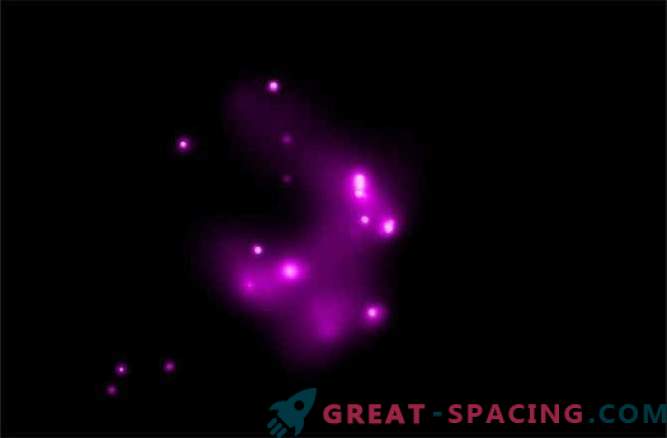
Image of the galaxy NGC 2276, made by the Chandra Observatory
Therefore, when astronomers discovered hints of such a black hole, they began to study it closely and it seems that the energetic object in the spiral arm of NGC 2276 is one of such elusive objects.
“We found that NGC 2276-3c has features similar to both types of black holes,” says co-author Andrei Lobanov of the Max Planck Institute for Radio Astronomy in Bonn, Germany. "In other words, this object allows you to connect the entire family of black holes."
The explosion from the black hole extends for 2000 light years, with a powerful jet of energy penetrating the interstellar medium of the galaxy. In this stream, there is a catastrophic shortage of young stars. The jet, as it seems, cleans the cavity near the black hole, removing star-forming gases.
Currently, researchers are trying to understand how this object got there. It seems highly likely that NGC-2276-3c formed in the core of a smaller dwarf galaxy that merged with NGC 2276 hundreds of millions or even billions of years ago. This study will not only open a rare class of black holes, it also presents an interesting question. Is our traditional thinking about growing black holes right? All known galaxies have supermassive black holes in their centers, but how do they become so big?
However, in the case of NGC-2276-3c, we know one thing for sure: in the vicinity of this black hole one should not look for life, this is the galactic dead zone.

